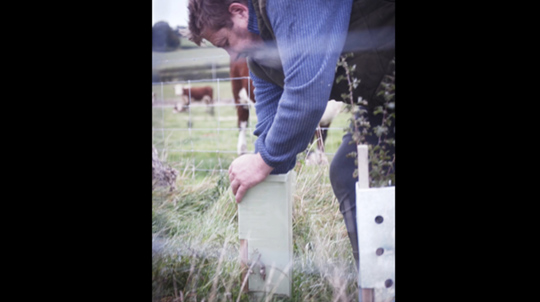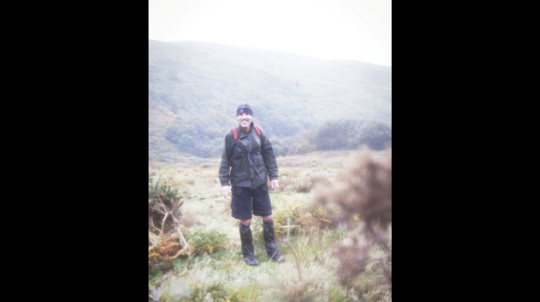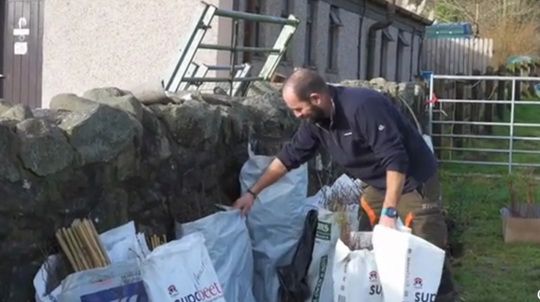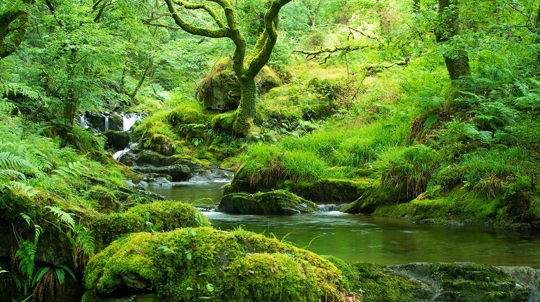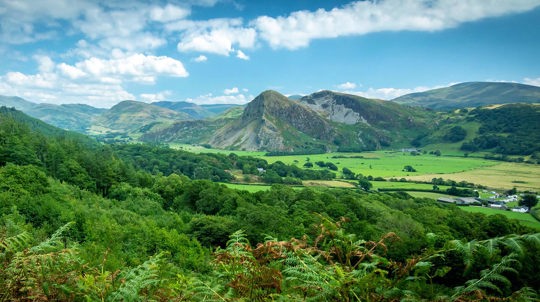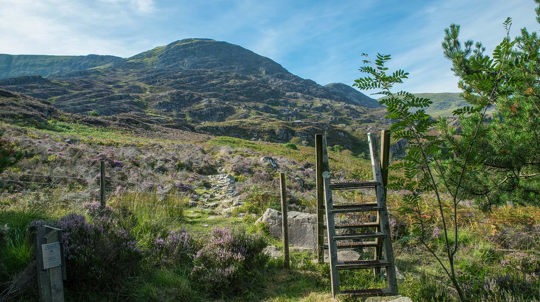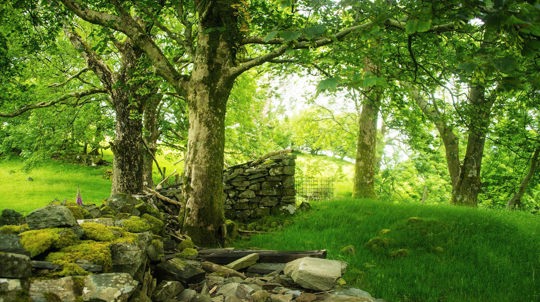Woodlands make up just 14% of the Welsh landscape and less than half of these are native.
English
Connecting and protecting Welsh woods and trees
Together with farmers and communities in Wales, we are running the Dyfi to Dwyryd project to help to protect and enhance the wonderful natural landscape for people and nature.
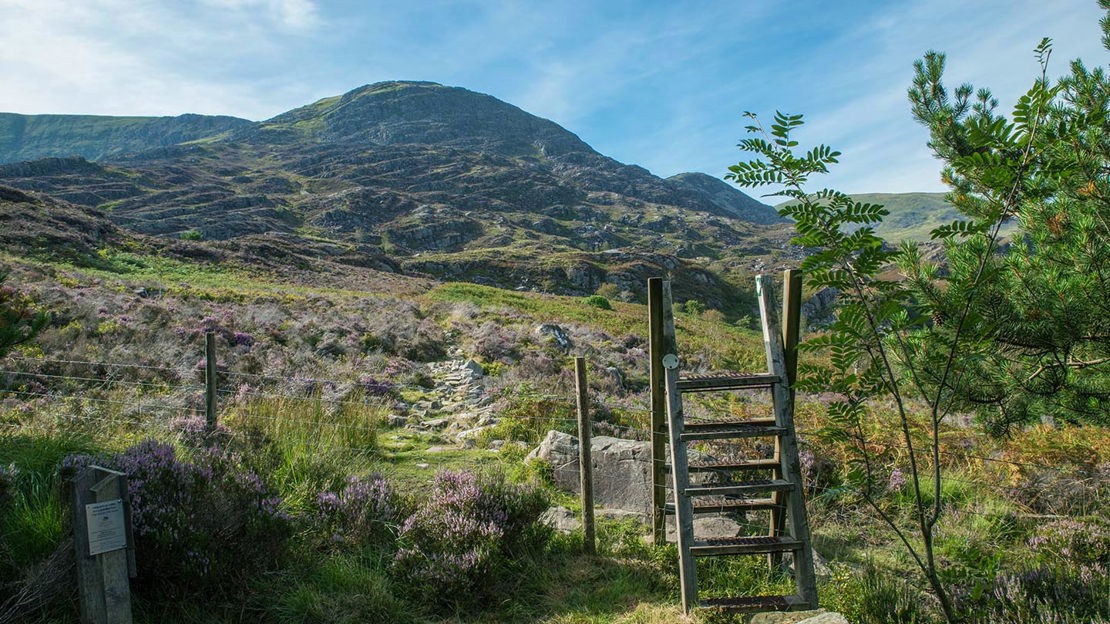
The Dyfi to Dwyryd Treescape project
We aim to help others expand and restore woodland habitat in Wales, from the mountain ranges to the sea estuaries, and improve biodiversity, all while supporting the wider community.
With the support of Players of People’s Postcode Lottery, the Dyfi to Dwyryd Treescape project looks to expand and connect more trees and wooded habitats. The project focuses on an area enveloped by the two main artery rivers – the Dyfi to the south and the Dwyryd to the north.
The Dyfi to Dwyryd landscape includes a thriving mosaic of diverse habitats, with a core of precious Celtic rainforest. Fragments of ancient woodland cling to gullies and river valleys that drip with ferns and lichens.
Small towns and villages are dotted throughout this area, with the mountainous peaks of Eryri National Park (Snowdonia) drawing visitors from far and wide. We want to work with the local people to embrace natural processes, nature-friendly habitat management and sustainability.
Why is the project important?
Much of Wales was once a thriving temperate rainforest or rich wooded habitat. In recent years, we've seen catastrophic nature loss, with our trees and their benefits declining due to:
- pests and diseases, such as ash dieback
- habitat fragmentation
- climate change
- changes in land use for agriculture and development.
Our Dyfi to Dwyryd Treescape project will attempt to help restore the missing valuable habitat links in the landscape, while restoring and protecting the remaining ancient woodland and the nature-based livelihoods of rural communities.
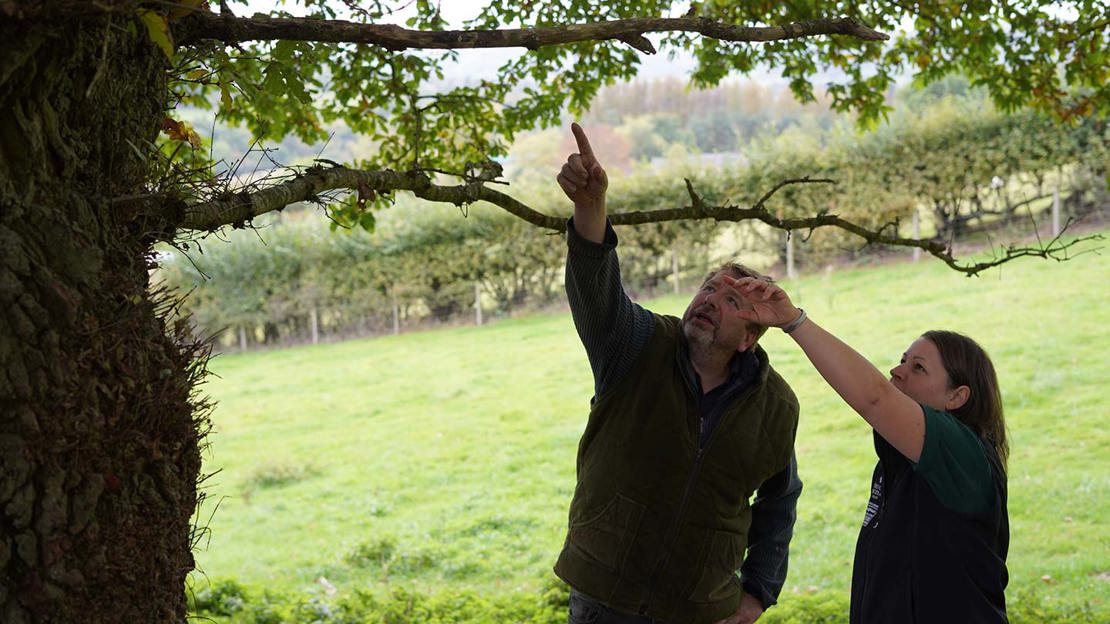
What we're doing
We're making sure that we have more of the right trees in the right place, so that habitats, wildlife and people who depend on them flourish.
Protecting biodiversity
We're working with landowners to help map, restore and protect pockets of existing ancient woodland.
By planting trees and encouraging natural regeneration in a considered way, we are improving resilience so that woodlands and the wildlife within them survive and thrive by:
- promoting diverse native species mixes
- developing mixed-age woodlands
- enhancing and establishing hedgerows and shelterbelts to connect existing wooded habitats.
Supporting landowners
Through our MOREwoods and other grant schemes we can help local landowners, farmers and nature to reap the long-term benefits of tree establishment, by making funding accessible, supplying saplings and offering expert advice.
We support the management of habitats in a way that is mutually beneficial to both landowners and nature by providing a site-specific approach, and by directing individuals to the most appropriate scheme.
Enhancing wellbeing
We want to increase wooded habitats and canopy cover, in both rural areas and villages and towns, to help communities reconnect with trees and woods so they can unlock their vast wellbeing, cultural, economic and social benefits.
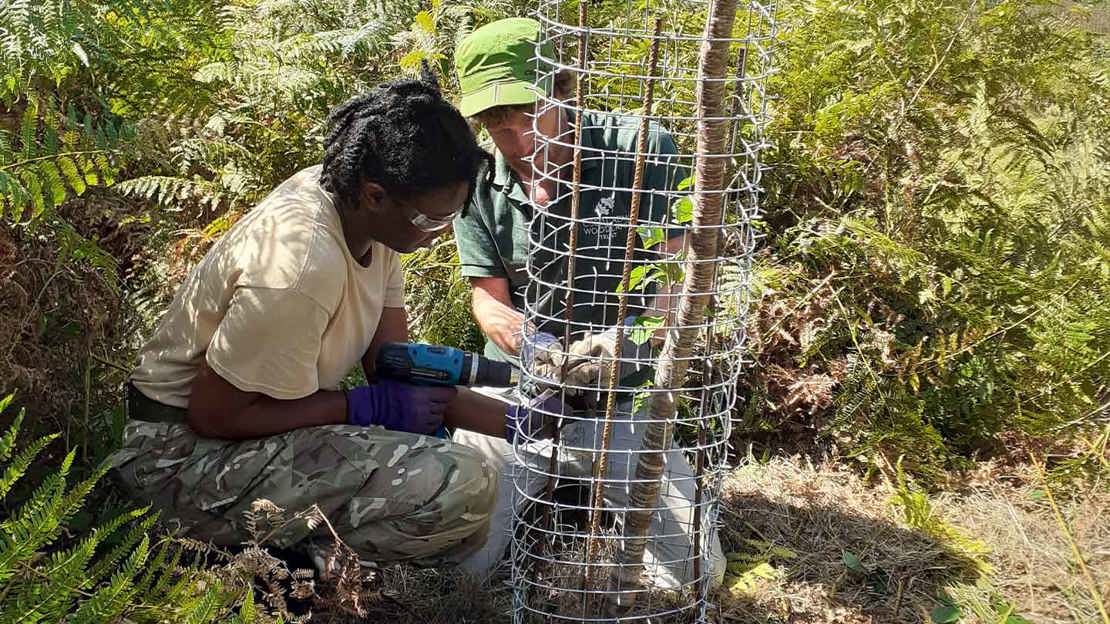
Who we're working with
Community woodland groups
In 2020 we joined forces with Llais y Goedwig, Wales' community woodland network, for the CommuniTree Project, which empowers communities to source and grow seeds and native trees and set up nurseries for local projects.
Farmers and landowners
We work with a network of farms to demonstrate the best way to record, protect, enhance and monitor farm trees for the benefit of both the business and environment.
Individuals
We're also working with the Mid Wales Landscape Scheme to give people access to free native trees, from one tree for their garden to a whole hedgerow for their farm or smallholding.
Partners
We work collaboratively with many organisations who share our same values so we can continue to create, restore and protect woods and trees for people and wildlife, together. From Eryri National Park Authority and RSPB Cymru to the exciting co-design partnership Tir Canol and many others.
How Talybont is tackling flooding with trees
In 2012, the small village of Talybont in Mid Wales faced devastation when severe flooding left 27 homes underwater. For many residents this was a momentous and deeply shocking event. But from adversity came action.
Determined to support one another and reduce future flood risks, local residents united to establish the Talybont Community Flood Group (known locally as The Floodees). Their mission? To develop a flood action plan to safeguard the village’s homes and residents. Without significant structural changes to the river’s course through the village, the risk of flooding remained a pressing concern.
A catchment-wide approach
The Floodees began looking at natural flood management solutions on a catchment-wide scale rather than waiting for a government-led solution. By understanding how water moves through the landscape, they could find natural ways to slow it down before it reached the village.
The group carried out research into the catchment, speaking with local farmers and landowners to explore solutions that would work for both the village and the land. They soon realised that simple, nature-based interventions – such as tree planting, hedgerow restoration and leaky dams – had the potential to make a real difference.
Planting trees to protect Talybont
With support from the Woodland Trust, the group began working with local farmers to plant trees in key locations across the catchment. Trees are natural water managers, helping to:
- intercept rainfall before it hits the ground
- increase water absorption into the soil, reducing runoff
- stabilise the land and prevent soil erosion, which can contribute to river flooding.
By planting woodlands and hedgerows on farmland higher up in the catchment, they are creating natural barriers that will slow the flow of water, reducing the risk of sudden floods in the village below.
Leaky dams: slowing the flow of water
Alongside tree planting, the group also introduced leaky dams. These simple natural structures allow water to pass through gradually, rather than rushing downstream all at once.
Made from logs and natural materials, leaky dams:
- slow the flow of water during heavy rain
- create small pools that allow water to soak into the ground
- help reduce the spike in river levels that can lead to flash flooding.
A community taking action
Thanks to the efforts of the Talybont Community Flood Group, the village is becoming more resilient to extreme weather. Their work has shown how communities can take proactive steps to work with nature to tackle climate challenges.
By planting trees, restoring hedgerows and introducing natural flood management techniques, local people are protecting their communities and people’s homes, supporting local wildlife and creating a healthier landscape for future generations. It’s a fantastic example of how small actions, taken together, can have a big impact.
Explore how people are making a difference
From individuals to partners, people are getting involved in creating a treescape for the future. Discover how.
How you can get involved
We have trees for individuals, schools, communities and landowners. By working in collaboration with you, since 1972, we've planted more than 55 million trees across the UK. By working together, we can drive nature recovery in Wales.
You can also help by recording notable trees on the Ancient Tree Inventory and by volunteering in your local area.
If you would like to get involved as a partner in Wales and need support to incorporate trees into your plans, contact us at wales@woodlandtrust.org.uk.
We're also keen to speak to woodland owners in Wales to help identify if your woodland is ancient and offer advice on protection and management. Email restoration@woodlandtrust.org.uk for more information on how we can help.
Visit woods in Wales
We look after several woods in the Dyfi to Dwyryd area, all free for you to explore and enjoy. Find a wood to visit.
If you're not able to visit, take our virtual tour of Coed Felenrhyd & Llennyrch.


